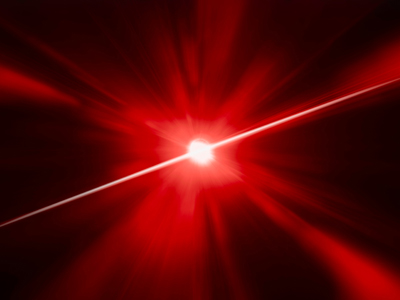
Light - Other Applications of Light
This GCSE Physics quiz looks at other applications of light. The obvious use of light waves is to enable us to observe things with our eyes, however, light is also used for communications and lasers. The word laser is made up from the initial letters of the words 'Light Amplification by Stimulated Emission of Radiation'. Lasers produce beams of light that are extremely intense and narrow. Laser light is described as being monochromatic and coherent which means that the crests and the troughs of the individual rays of light are perfectly aligned and so the light beam doesn't spread out much and is very intense. Scientists working for the NASA space agency have been able to measure the distance of the Moon extremely accurately by reflecting laser light off special reflectors left behind after the Apollo Moon landings.
Ready for more?
not all...
quizzers. Try to win a coveted spot on our Hall of Fame Page.







